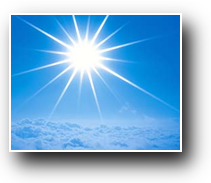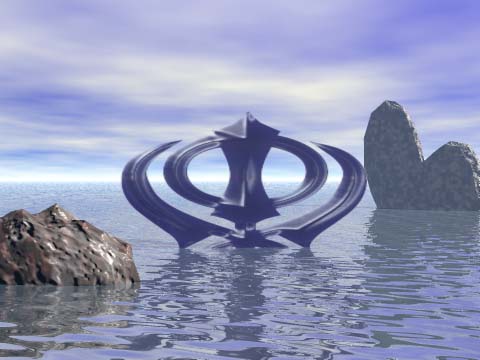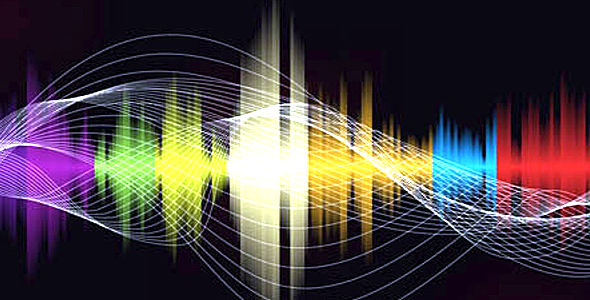FOLLOW:
Sant Mat / Radhasoami Cosmology
 Sant Mat/Radhasoami proposes an elaborate cosmology concerning a series of spiritual universes beyond the physical. In many ways it is more like western esoteric teachings such as Neoplatonism,Kabbalah (albeit without the complex dialectic of the latter), Theosophy, and Max and Alma Theon, rather than Indian teachings which tend to have a much simpler cosmology. Robert Searle points out that the obscure aspects of Shabd Yoga are virturally identical had by those other Spiritual Paths (notably Sivananda’s Spiritual Experiences)
Sant Mat/Radhasoami proposes an elaborate cosmology concerning a series of spiritual universes beyond the physical. In many ways it is more like western esoteric teachings such as Neoplatonism,Kabbalah (albeit without the complex dialectic of the latter), Theosophy, and Max and Alma Theon, rather than Indian teachings which tend to have a much simpler cosmology. Robert Searle points out that the obscure aspects of Shabd Yoga are virturally identical had by those other Spiritual Paths (notably Sivananda’s Spiritual Experiences)
This page presents a partial and incomplete introduction; there is actually a huge amount of source material, much of it rare and often inaccessible (some good references for further reading are given at the bottom of this page), as well as oral teachings by various masters of with the Sant Mat tradition (Satgurus).
At least five spiritual universes are described; often more. However the teachings evolve rapidly, because of the schizmatic nature of the guru lineages in this tradition, resulting in many different teachings. The following summary is from an online book by Dr Andrea Grace Diem
Following the lead of previous gurus in the Sant tradition, Shiv Dayal Singh described five inner planes (Sahans-dal-Kanwal, Trikuti, Daswan Dwar, Bhanwar Gupha, and Sach Khand) which a soul must pass in order to reach its ultimate destination. Shiv Dayal Singh has also at times given slight nuances to this basic five plane cosmology, with the two major variations concerning the region between Daswan Dwar and Bhanwar Gupha, known as Maha Sunn (the great darkness), and the further subdivisions of Sach Khand, which he calls Alakh, Agam, and Anami. In the various Radhasoami branches in India there has been debate over some of these more rarified distinctions, but overall there is general agreement on the major features of the inner planes.
THE GURU IN AMERICA: The Influence of Radhasoami on New Religions – chap 3 The Genealogical Connection: Kirpal Singh, Paul Twitchell, and Eckankar
In this cosmology, the soul in its ascent must pass through various intermediate spheres or regions and avoid becoming stuck there (compare Sri Aurobindo’s Intermediate Zone), finally reaching Radhosoami, the supreme Godhead.
The technique of ascent is made possible by the initiation of a living master, and by meditation on specific inner sounds and lights. The nature of the sounds and lights varies according to the specific region, and this allows you to know what region you are at (compare Theon, who says each of the occult planes can be identified by specific colours)
Andrea Grace Diem, in another online book, describes all this as follows (comparing it with Gnosticism)
The Sant tradition (describes)…four basic regions the soul traverses until it reaches the fifth region, the highest state of consciousness. Again, as with the Gnostics, each realm is controlled by a ruling power or aeon. Here, the light and sound of each region are described. In the first region, Sahans Dal Kanwal, the soul is pulled out of the body and enters a new dimension, encountering for the first time beautiful light and sound. The light is described as a thousand candles, and the sound like bells. The second region is called Trikuti, and here the mind is shed from the soul. The light is referred to as a red sun, and the sound as thunder or drums. Daswan Dwar is the third spiritual realm, a realm pure spirit where one attains self-realization. Magnificent white light is seen and one hears a harmonious stringed instrument. The fourth region is titled Bhanwar Gupha, where the soul approaches the infinite God, envisioning a splendid white light and hearing a soft flute. Finally, the soul reaches Sach Khand and merges into the infinite ocean, attaining God-realization. Here, the light radiates to infinity and the sound is compared to that of a vina.
The Gnostic Mystery: A Connection between Ancient and Modern Mysticism – chap 4 A Comparative Study
(The Vina is described variously as “A stringed instrument of music, also the melodious music-sound of the instrument itself”) [ Sant Kirpal Singh – Glossary of Oriental terms and important names of persons and places])
Other association of sounds and regions seems to be based on Paul Twitchell’s writings. Twitchell, who founded Eckankar, broke from Radhasoami, although retaining their teachings. He then added a whole lot of additional levels. My own impression from reading several of his books many years back is that everything good that he said can also be found in the Radhasoami teachings (and in Julian P. Johnson’s The Path of the Masters, which Twitchell copied), and his own contributions are probably just assorted astral-physical visions and what not. I in no way deny that there are many decent people in the Eckanker movement.
For those who are interested, there is a list of his cosmological correlations of planes and sounds at SPIRITUAL SOUND WORLDS by Dee Finney. For a long and at times acrimonious debate on Twitchell and plagiarism, see The early September EK Debates – David Lane’s “The NEURAL SURFER” (September 1997)
Like Classical Gnosticism, with it has many parallels (see e.g. Andrea Grace Diem, The Gnostic Mystery: A Connection between Ancient and Modern Mysticism (Walnut, Calif.: Mt San Antonio College Press, 1992), and Neil Tessler Sophia’s Passion: Sant Mat and the Gnostic Myth of Creation) Sant Mat is a very creative movement with many variations of standard themes, and Radhasoami Cosmologies of specific gurus and traditions differ in a number of details. The following table, is adapted and modified from Dr Andrea Grace Diem’s book The Guru in America, distinguishes between Beas and Agra lineages. I have also added the version given by Shiv Dayal Singh, the founder of the modern Sant Mat Radhasoami tradition (although himself part of a lineage that includes earlier masters) and the teachings of Rajinder Singh (Beas – Sawan-Kirpal lineage). See Professor David Lane’s chart Contemporary Guru Lines & Branches mirror for the relationships between the various gurus.
| Shiv Dayal Singh – Sar Bachan | Version #1 common in Beas related groups | Version #2 common in Beas related groups | Rajinder Singh – Science of Spirituality cosmology (Beas) | Common in Agra related groups, particularly Soami Bagh |
| Radha Swami (“Lord of the Soul”) – described as Anami (nameless) and Akeh (indescribable) |
6. Sach Khand (“Truth Region;” soul/God union) |
9. Anami Lok (“nameless”) | 10. Anami Lok * | 10. Anami (God realisation) |
| 6. (Unnamed level) | 8. Agam Lok (“inaccessable”) | 9. Agam Lok | 9. Agam Purush | |
| 7. Alakh Lok (“invisible”) | 8. Alakh Lok | 8. Alakh Purush | ||
| 5. Sat Nam / Sat Lok | 6. Sach Khand | 7. Sach Khand | 7. Sat Lok (God the Father) (self realisation) | |
| (Unnamed level) | 5. Bhanwar Gupha (“whirling vortices/cave”) |
5. Bhanwar Gupha | 6. Bhanwar Gupha | 6. Bhawargupha |
| — | — | 5. Maha Sunn (“great void”) | 5. Maha Sunn | |
| 3. Sunna / Daswan Dwar | 4. Daswan Dwar (“tenth door;” beyond mind) |
4. Daswan Dwar | 4. Daswan Dwar | 4. Sunn (“void” – liberation) |
| 2. Trikuti / Gagan (Heaven) | 3. Trikuti (“three prominences;” causal region) |
3. Trikuti | 3. Trikuti | 3. Brahmand (Causal) |
| 1. Sahasdal Kamal | 2. Sahans-dal Kanwal (“thousand petalled lotus” astral region) | 2. Sahans-dal-Kanwal | 2. Sahans-dal-Kanwal | 2. And (Subtle) |
| 6 Pinda regions (physical) | 1. Pind (“body” physical region) | 1. Pind | 1. Pind | 1. Pind |
* “sometimes it is mentioned in Soami Bagh literature that there are two “anamis”– one right above Sach Khand and the final, great anami at the end” – AGD
The reason for some of these subdivisions may be arbitrary. Kulbir Singh, posting on the Phorum message board Re: Radhasoamis – Vichaar on Ruhaniyat (03-01-05 09:53) , in reply to a query regarding Sat lok, Anami Lok and Alaekh Desh being above Sach Khand says
“Agra branches are upset at Beas for changing the topmost realms. Early RS accounts state that Sach Khand is the fifth level and RS Dhaam is the last level. RSSB wanted to avoid clash with Sikhs and therefore they divided the Sach Khand level into four parts namely Satlok, Anami Desh, Alaekh Desh and Radhasoami Dhaam. All this is not written in Siri Guru Granth Sahib Jee. This too proves that all this is false. ”
I would not go so far as to say it is false; rather these are different names applied to different, or the same, spiritual region or occult reality. And sometimes the same name is applied to different regions and realities. This is the same as is found in Kabbalah too; the same names of the four worlds are used in different Kabbalistic traditions to designate different grades or levels or realms of reality.
My take on the Sant Mat / Radhasoami cosmology is that the five or more higher worlds and associated phenomena can be associated to some extent with the “vertical” hierarchy of planes of existence, but seem more to pertain to the “”emanational” ontocline / axis / parameter.
The reason I don’t consider the Sant Mat cosmology to be primarily “vertical” is that I am following Sri Aurobindo in assuming that the “vertical” series of planes tends towards greater integral spiritual transformation (culminating in Supramentalisation), whereas the Sant Mat cosmology tends to greater transcendence and otherworldliness.
Note also the very different association of the Sahasrara Chakra – for Sri Aurobindo ot pertains to the Higher or Spiritual Mind which is beyond the rational mind, whereas in Sant Mat it pertains to the Subtle or “Astral” region (which may or may not be the same as the Astral plane of occultism). According to the Theonist, Theosophical, and Aurobindonian position, the Astral corresponds to the emotional or desire being, and this is beneath the level of the intellect, not above. Of course it may be that one is right and the other wrong (although I don’t hold this option, i consider them both to be based on authentic spiritual knowledge), that Radha Soami teachings use the same term to designate two different realities, and these have been confused in an attempt at systematisation, that they are each referring to two completely different things, or that both are right but they are referring to different parameters of being.
There are interesting parallels of Sant Mat cosmology with the Theon teachings regarding the the four major worlds (obviously inspired by Kabbalah but not necessarily the same as the Kabbalistic worlds!), which I associate with the “emanational” ontocline
Books on Sant Mat Cosmology
by Robert Searle
The following are good publications of the RS Beas Satsang
i. The writings of Professor Puri are a must if you are serious about Radha Soami cosmology. His books if I recall rightly in connection with the matter are Radhaswami Teachings, The Philosophy of the Gurus, and Vol II Mysticism; The Spiritual Path
ii. Many RS Beas publications give details about the initial experiences of Surat Shabd Yoga. (eg Charan Singh’s Die to Live, Sawan Singh’s Spiritual Letters et al) They have excellent indexes.
iii. Discourses on Sant Mat by Sawan Singh (Beas; Radha Soami Satsang, 1970) attempts in parts to show how corroborative the inner experiences of the eastern saints are by comparing some of their poetic symbolism. Fascinating light too on inner RS cosmology.
Source: http://www.kheper.net/topics/Sant_Mat/cosmology.html

The Power of the Word
We find in the Bible the words: ‘In the beginning was the word, and the word was God’, and we also find that the word is light, and that when that light dawned the whole creation manifested. These are not only religious verses; to the mystic or seer the deepest revelation is contained in them.

The Mysticism of Sound
Abstract sound is called sawt-e-sarmad by the Sufis; all space is filled with it. The vibrations of this sound are too fine to be either audible or visible to the material ears or eyes, since it is even difficult for the eyes to see the form and color of the ethereal vibrations on the external plane.

Sikhism
A progressive religion well ahead of its time when it was founded over 500 years ago, The Sikh religion today has a following of over 20 million people worldwide and is ranked as the worlds 5th largest religion. Sikhism preaches a message of devotion and remembrance of God at all times, truthful living, equality of mankind and denounces superstitions and blind rituals.

Naam or Word – Hari Ras
Now we come to another term, “Hari Ras” or Divine intoxication. Whoever communes with the Word, Shabd or Naam feels an exhilarating effect, too sweet and too absorbing for words. Far from being inebriating and stupefying it raises one into a state of super-consciousness and universal awareness.

Vipassana Meditation: The Soothing Divinity of Sound
The Himalayan masters of ancient India developed the “sound current” that is now known as the “divine sound.” The divine sound is the foundation used for practicing various forms of yoga—nada, sahaj, Babaji, kriya, and Sikh practices such as shabda yoga.